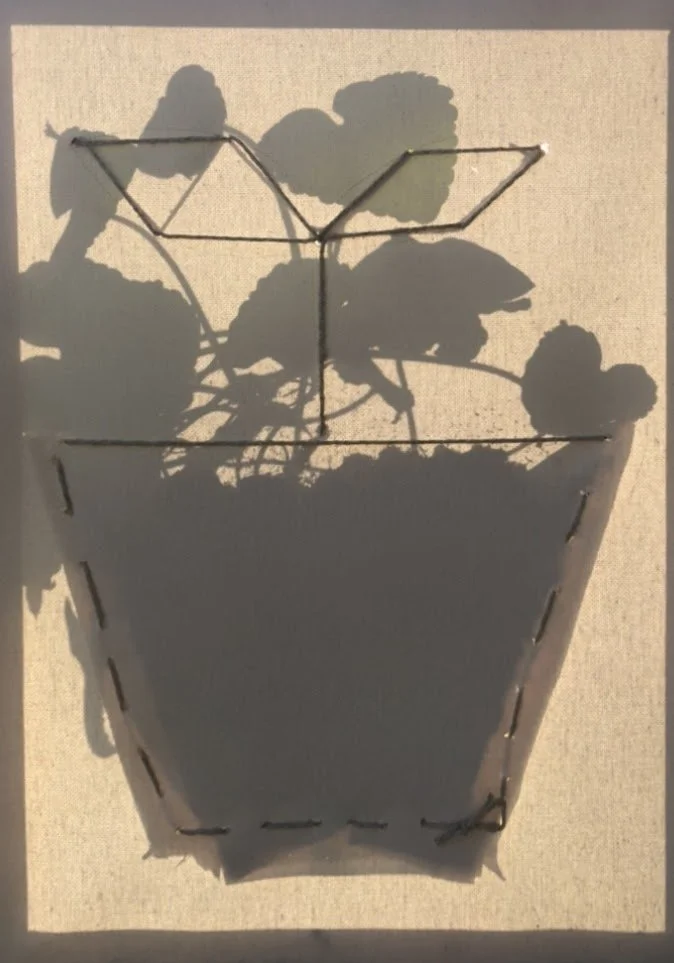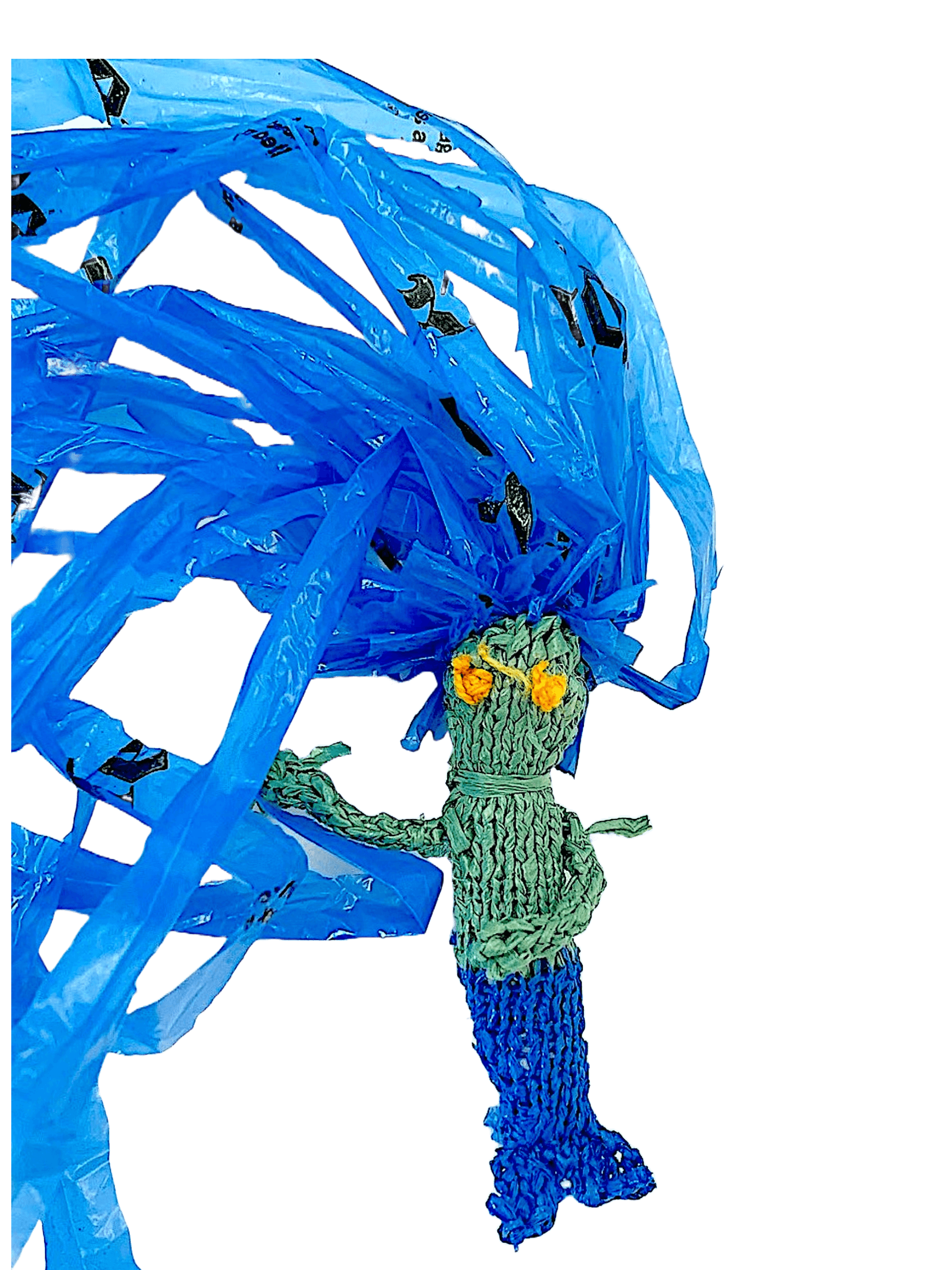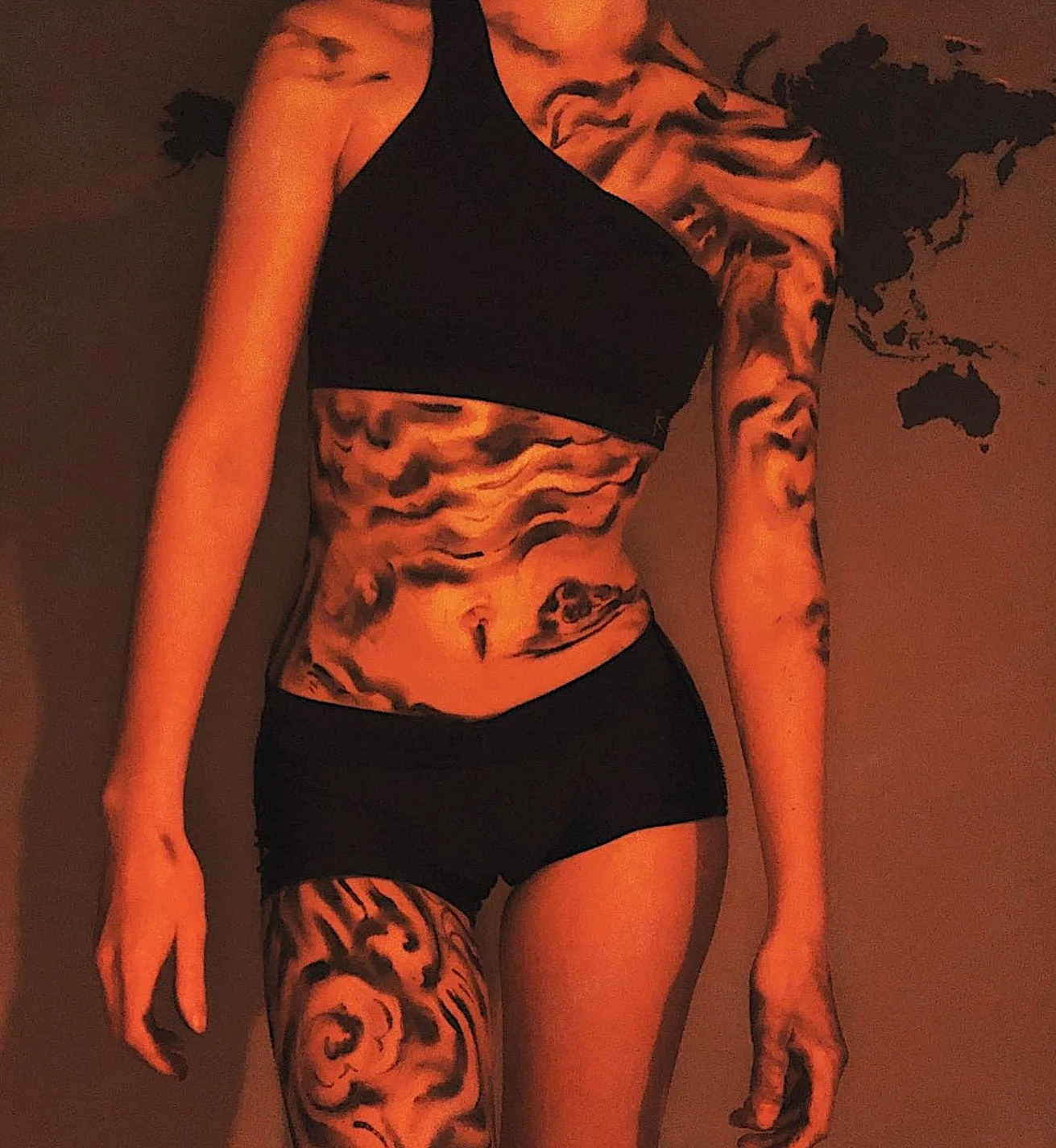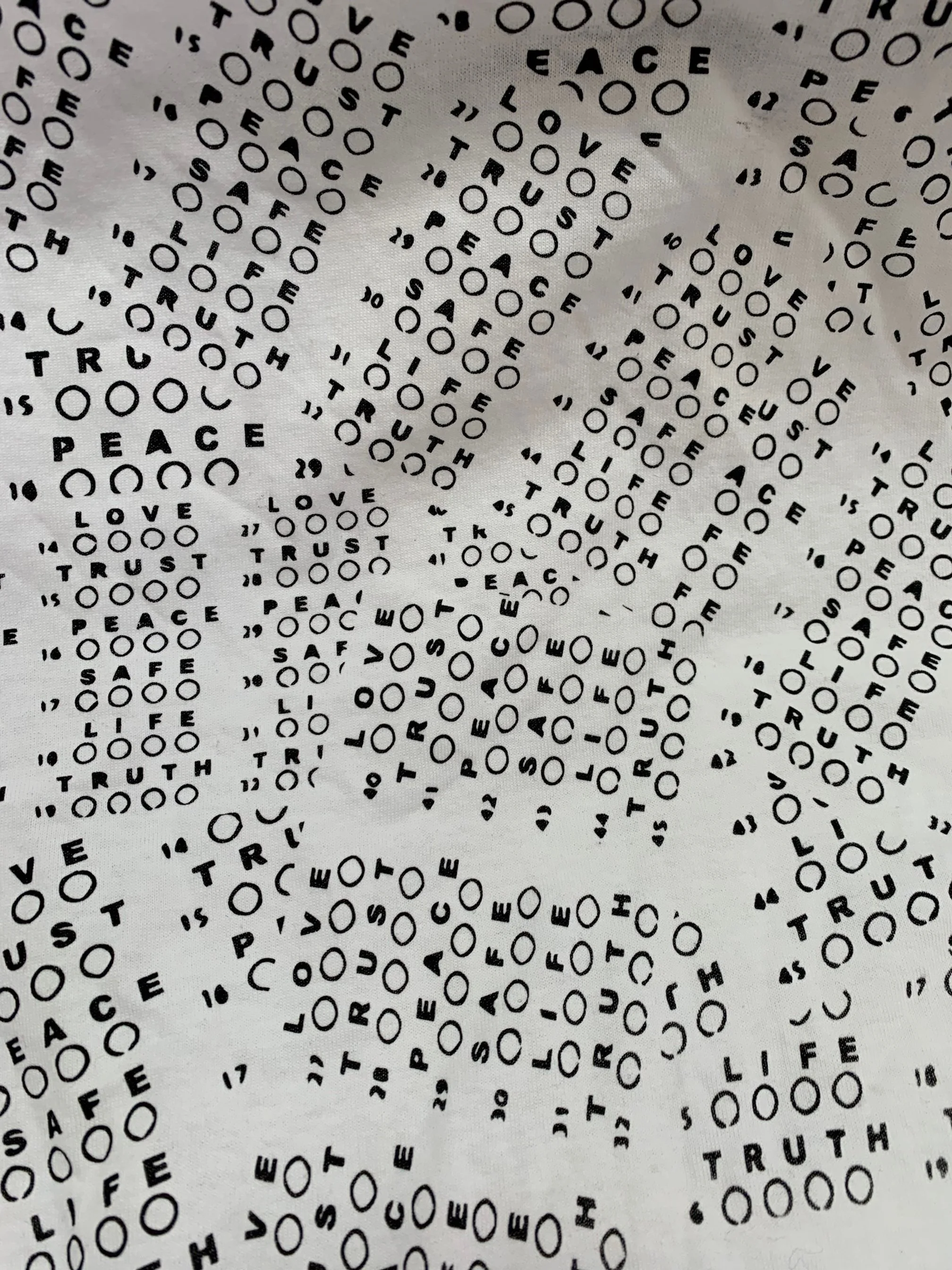Conceptual: Materials, Processes & Activism in College Art Portfolios
How can your choice and manipulation
of materials be powerful signifiers
of your artwork’s meaning?
Shadow Stitched:
Framing Absence Through Light and Thread
This conceptual piece uses natural light, shadow, and embroidery to transform a mundane subject into a layered visual metaphor. The stitched outline of a potted plant interacts with its shadow, creating a dialogue between permanence and impermanence. By blending drawing, sculpture, and installation, the work invites viewers to reflect on memory, presence, and the boundaries of material form—essential themes in powerful portfolio storytelling.
Ocean Guardian:
Textile Sculpture with Recycled Plastics
Using crochet techniques and salvaged plastic bags, this eco-conscious sculpture blends fiber art and environmental activism. The piece reimagines the ocean as both muse and victim, calling attention to marine pollution while demonstrating inventive material use. As a portfolio submission, it highlights sustainability, craftsmanship, and conceptual storytelling—qualities that resonate deeply with art and design school reviewers looking for originality and purpose-driven work.
The Body as Canvas:
Using Skin to Tell a Story
This striking conceptual work transforms the human body into a storytelling surface, using smoke-like ink forms to evoke themes of transformation, identity, and vulnerability. The piece blurs the boundaries between performance, painting, and photography—inviting viewers to consider how personal and political narratives can be expressed through corporeal art. A strong example of how conceptual portfolios can challenge expectations while showcasing technical control and bold creativity.
Wearable Resistance:
Poetry and Portraiture as Protest
This powerful conceptual design merges fashion with activism, transforming a striped button-down shirt into a wearable platform for social commentary. Featuring a stark monochrome portrait on the chest and a bold poetic excerpt on the torso, the piece addresses themes of race, survival, and self-expression. By placing emotionally charged language and imagery directly onto the body, it forces viewers to confront the intersections of art, identity, and justice—making it a standout example of conceptual design for college art portfolios.
Disrupted Typography:
Repetition, Language, and Visual Tension
This typographic textile design uses repeated words—“love,” “truth,” “peace,” “trust”—in an intentionally fragmented and distorted layout, challenging viewers to slow down and question the way we process language. The disruption of form creates a visual stutter that mirrors the real-world difficulty of achieving the ideals these words represent. It’s a strong example of conceptual art-meets-graphic design, where text becomes texture and meaning is embedded in disruption. This piece is ideal for portfolios that aim to blend visual communication with critical thought.
Conceptual Art as Commentary:
Where Material Meets Meaning
In these pieces, form is inseparable from function — every material choice, distortion, and technique serves a deeper message. From wearable activism to poetic typography, these conceptual works move beyond aesthetics to ask questions, spark dialogue, and make the invisible visible. This kind of portfolio work signals to admissions officers that you're not only technically skilled, but also critically engaged. It shows you understand art as a tool for storytelling, problem-solving, and change — a powerful asset in both art school and the world beyond.





